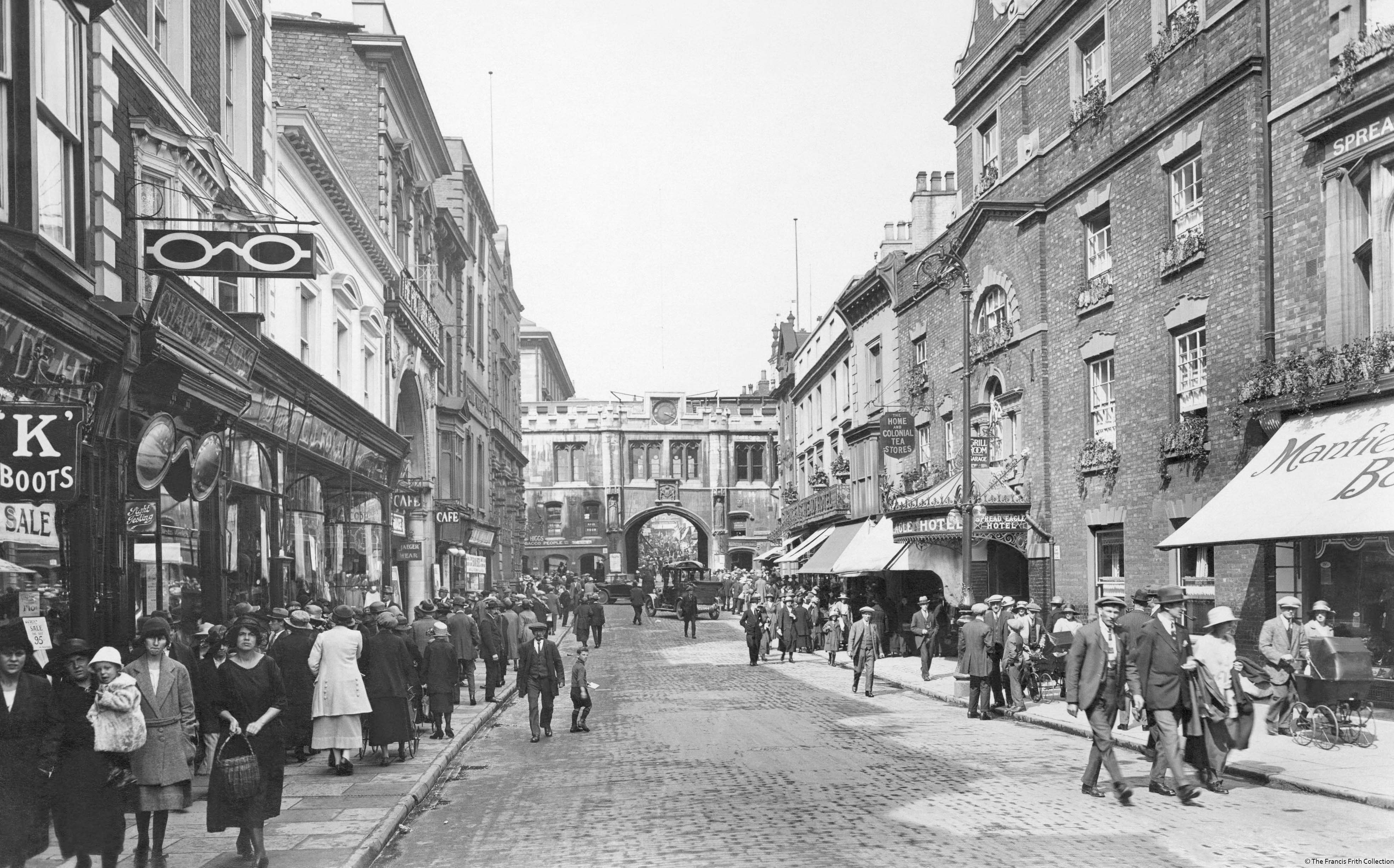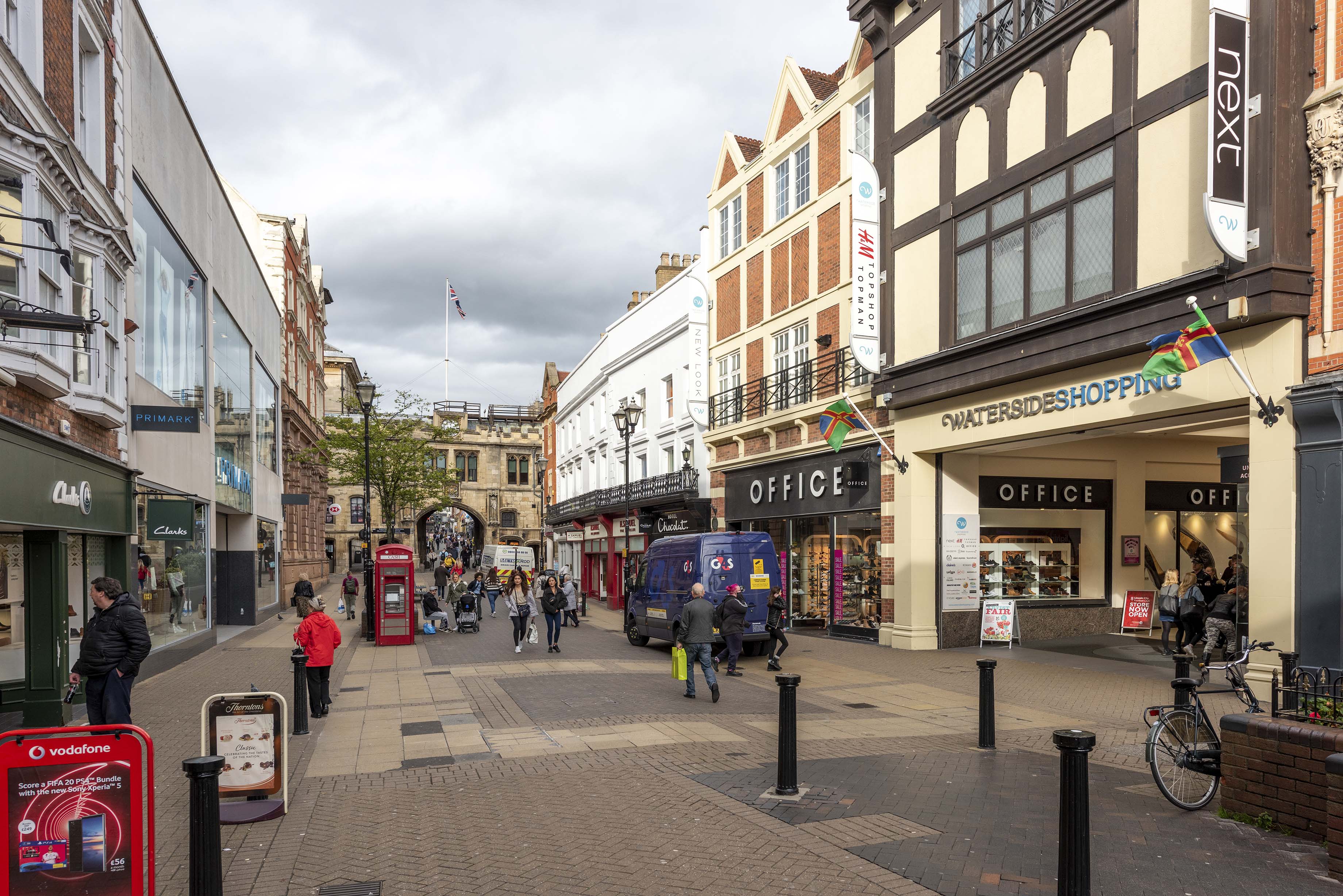
Then & Now: Lincoln’s Guildhall…

Lincoln’s High Street is dramatically different to this scene, 100 years ago. From 1920 to 2020, see how the centre of historic Lincoln has evolved!
100 years of history. Welcome to Lincoln’s High Street in 1923. Note the neater stucco frontage of the row of buildings currently occupied by Hotel Chocolat and Samuels the Jewellers. Less recognisable is number 300 High Street.
That glazed and iron portico is long gone, as is The Saracen’s which dated back to the middle ages but was given the frontage pictured here at the start of the 19th century. Shortly after this picture was taken, the Spread Eagle in 1924 became the Hotel de Luxe, named by flush entrepreneur H H Leven who spent £20,000 doing the place up.
Doubtless the economic depression of the 1930s took its toll and the hotel passed into the ownership of Lincoln Hotels Ltd, the latter finally closing in 1959… our sincere thank to Steve Richardson of Lincoln Camra who provided this insight.
You’ll also notice Home & Colonial Tea Stores. The grocer was founded in 1883 on London’s Edgware Road and by 1900 it had 100 stores. By 1903 it had five times that many, making it and the CoOp perhaps the first supermarket chains. By 1960 Home & Colonial still had a presence on the UK’s High Streets and was making profits of £4m, but through the latter half of the 20th century, it was amalgamated into companies we now know as Debenhams and Safeway.
Lincoln’s Waterside Shopping Centre opened in 1991, but here, you’ll see footwear retailer Manfield. A renowned cobbler from Northampton, Moses Manfield and his sons Harry & James were one of the first companies to ‘cut out the middleman’ and sell their footwear directly to the public.
They soon had shops in London, Liverpool, Manchester, Birmingham, Sheffield and London as well as Lincoln… in fact, 70 shops by the time this photograph was taken.
By the time the company was converted into a Plc in 1950, there were 93 branches and the company’s overdraft was a worrying £760,000. There were record profits and eventually a takeover by US firm Sears in 1956. The name endured on the High Street until a management takeover which created the firm we now know as Dolcis.
Speaking of worrying overdrafts, HSBC bank can be seen just across the road from the Guildhall. The area was formerly known as Baxtergate, and was situated just outside the city walls. The bank used to be an inn called The Falcon prior to the mid-15th century – and once hosted King James I who attended a cockfight at the premises in 1617.
Its name was changed to The Reindeer in 1716, before it was remodelled in 1848 and became The Lincoln & Lindsey Banking Company in 1893, then the London City & Midland Bank in 1913. It was extended a year after this photo was taken by W G Watkins architects and became Midland Bank in 1923, then HSBC in 1998.






